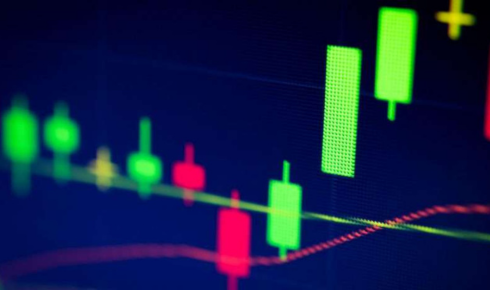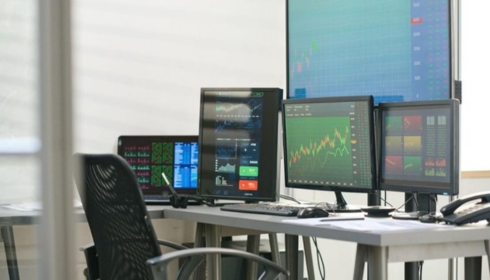Understanding SDE: The Real Story Behind a Business’s True Earning Power

If you’ve ever tried to figure out how much a small business is really worth, you know how tricky it gets. On paper, a company might show one number for profit, but behind that tidy figure lies a much more complicated — and often more interesting — story. Owners pay themselves salaries, deduct personal expenses, and occasionally write off things that make accountants raise an eyebrow but investors shrug at. That’s where SDE comes in — the metric that tries to cut through all the noise and show what the business actually earns for the owner.
It’s not as intimidating as it sounds. In fact, once you understand how it works, you’ll see why it’s the go-to yardstick for valuing small, owner-run companies everywhere.
Getting to the Heart of SDE
The sde business meaning — or Seller’s Discretionary Earnings — is simple enough in theory. It represents the total financial benefit a single full-time owner-operator gets from a business in one year. Think of it as the owner’s true income, after adjusting for add-backs like salary, perks, and one-time expenses that wouldn’t necessarily carry over to a new owner.
Unlike corporate profit metrics like EBITDA (which big companies use), SDE is deeply personal. It reflects how much money the business puts in your pocket — not just what’s left over after taxes and accounting rules do their dance.
Let’s say you own a landscaping company. You pay yourself a $60,000 salary, report $80,000 in net profit, and expense $10,000 for your personal vehicle (because it doubles as a work truck). You also took a one-time $5,000 hit for repairing old equipment. Adjust those numbers, and your SDE jumps from $80,000 to $155,000.
That number — the $155,000 — is what potential buyers care about. It shows them what kind of money they could expect to earn if they bought your business and ran it themselves.
Why SDE Exists (and Why It’s So Useful)
Small businesses are messy by nature. Owners wear multiple hats: manager, bookkeeper, marketer, even janitor on bad days. And their financials reflect that chaos. Expenses get mixed up, salaries vary, and not every cost is truly “essential.”
SDE solves that by stripping away the noise. It’s like zooming out to see the whole financial picture rather than just one blurry corner.
It’s also a universal language between buyers and sellers. While one business might report low profit because the owner pays themselves generously, another might look more profitable simply because the owner takes less. SDE evens the playing field — making it possible to compare two businesses on fair terms.
In short, it’s not about creative accounting. It’s about honest clarity.
Breaking Down Seller’s Discretionary Earnings
So, what are seller’s discretionary earnings exactly? In practice, it’s the total pre-tax income available to the business owner — including profits, salary, and discretionary expenses that wouldn’t apply under new ownership.
To calculate SDE, you start with the business’s net income and add back:
- The owner’s salary or compensation
- Non-essential or personal expenses (like travel, vehicle use, meals, etc.)
- One-time or non-recurring costs
- Interest, taxes, depreciation, and amortization (if applicable)
What you get is a realistic snapshot of what the business is worth to someone running it day-to-day.
That’s why brokers, investors, and buyers rely on SDE when evaluating small businesses. It’s not a theoretical metric — it’s grounded in real cash flow.
When SDE Tells a Bigger Story
SDE doesn’t just measure profit — it tells a story about lifestyle. For example, two companies might both have $200,000 in SDE. One might require the owner to work 60 hours a week; the other might only need 15 hours of oversight and a strong manager. Both are valuable, but to different types of buyers.
It also hints at how “owner-dependent” a business really is. If the current owner is involved in every little detail — from approving invoices to answering customer calls — then the SDE might be harder to replicate for a new buyer. On the flip side, if the company runs smoothly without constant supervision, that’s a more scalable, and often more valuable, operation.
The Role of SDE Margin
Now, let’s talk about the sde margin — another critical concept that gives context to those earnings.
SDE margin measures how much of your revenue turns into owner benefit. It’s calculated as (SDE ÷ Total Revenue) × 100. So, if your business makes $1 million in sales and your SDE is $250,000, your margin is 25%.
A higher SDE margin usually means a lean, efficient operation. Lower margins might indicate high overhead, competitive pricing pressures, or inefficiencies. But again, context is key. Some industries naturally run on thin margins (like retail), while others — like software or consulting — enjoy more flexibility.
Understanding this ratio helps both buyers and sellers see how well a business converts effort into income. It’s a reflection of financial health, but also operational discipline.
The Emotional Side of Selling
When it comes time to sell, SDE isn’t just a number — it’s a reflection of everything you’ve built. For many owners, the process can be deeply personal. After all, SDE doesn’t just measure money; it measures your life’s work, your late nights, your risks, and your resilience.
That’s also why honesty in calculating SDE matters. Inflating numbers with unrealistic add-backs might boost your asking price short-term, but savvy buyers will see through it during due diligence. And trust, once lost, is hard to rebuild.
Instead, view SDE as your chance to show the business in its best truthful light — a fair portrayal of what it really delivers to someone willing to step in and continue your legacy.
How Buyers Use SDE to Make Offers
Buyers often use SDE multiples to determine what they’re willing to pay. For small businesses, the multiple typically ranges from 2x to 4x SDE, depending on factors like growth potential, stability, and industry risk.
A well-established service business with recurring clients might sell for 3x its SDE, while a riskier venture with volatile revenue might fetch closer to 2x. It’s not just math — it’s a balance between risk and reward.
This is why keeping clean records, documenting expenses, and showing consistency are crucial. A business with transparent financials almost always commands a higher multiple — simply because it builds confidence.
Beyond Numbers: What SDE Really Represents
SDE is more than a financial calculation — it’s a lens through which to view small business ownership. It captures not only what the company earns, but what it gives: freedom, opportunity, and a livelihood.
That’s what makes it so powerful. For buyers, it’s a way to predict income and assess lifestyle fit. For sellers, it’s the chance to put their hard work into a measurable — and marketable — figure.
But here’s the thing: SDE isn’t static. It can change with better management, smarter spending, or scaling strategies. Knowing your SDE today helps you plan your growth for tomorrow.
The Final Thought
At the end of the day, SDE is about truth — the kind of truth that matters in business. It tells the real story of how much your effort, strategy, and discipline translate into reward.






